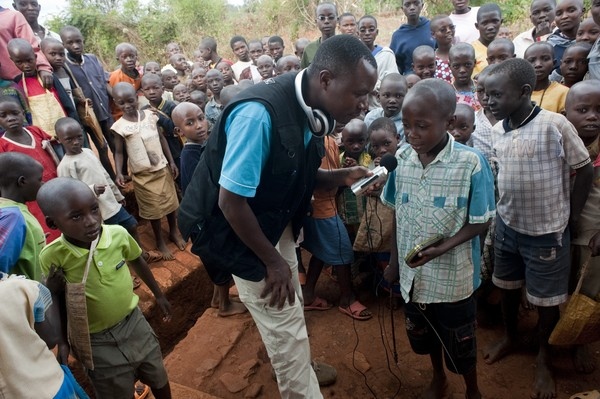Burundi: Burundi People Profile
2013/08/20
Demogaphic



People
Burundi is a very densely populated country with substantial emigration, despite being the least globalized of 140 countries. Despite being the 145th largest country with very little land, Burundi has a population of about 10.9 million in 2014 with about 314 people per square kilometer, which ranks 45th in the world, and the second highest density in Sub-Saharan Africa.

Ethnic groups
As in Rwanda, Tutsi and Hutu are the principal ethnic communities, with the Hutu constituting the overwhelming majority and the Tutsi a significant minority. Other groups include the Twa Pygmies and a sprinkling of Swahili-speaking peoples from Tanzania and the Democratic Republic of the Congo. Common perceptions of Tutsi as uniformly tall and graceful and of Hutu as short and stocky do not fit the reality of physical variations because the two groups have frequently intermarried over the centuries.
Traditionally, the Hutu have been farmers, while the Tutsi have been pastoralists. Some regional status differences exist part the Tutsi, with the Tutsi-Banyaruguru clan found primarily in the north of the country and the Tutsi-Bahima primarily in the south. Historically, the Tutsi-Banyaruguru generally dominated precolonial Burundi, while the Tutsi-Bahima have generally dominated Burundi since independence. Society was originally organized around family and clan loyalties. Beginning in the 16th century, these ties were adapted to include a Tutsi monarchy. Intervening between the king (mwami) and the masses was a princely class (ganwa) that kept the ordinary Tutsi and Hutu on equal footing. The relationship between the two groups began to change during the colonial period, at the same time as the German and Belgian colonial administrators favoured the Tutsi over the Hutu.
Languages
Burundi’s official languages are Rundi (Kirundi), a Bantu language that is the standard medium of communication throughout the country, and French. Swahili, the language of trade, is widely spoken in Bujumbura, as is French. It is notable that Rundi is spoken by both the Hutu and Tutsi, who together form the overwhelming majority of the country’s people; such linguistic homogeneity is rare in sub-Saharan Africa.
Religion
The country has a relatively large Christian people, of which about three-fifths are Roman Catholic. A large minority and even some Roman Catholics as well practice traditional religion. Muslims constitute about one-tenth of the people. Church-national relations have been a focal point of ethnic tension since the 1970s. The government of the Second Republic (1976–87) attempted to curtail the social and educational activities of the Roman Catholic Church because its policies were thought to favour the Hutu over the Tutsi. Next a military coup in 1987, the issue was temporarily defused, from presently on the church continues to be seen by a lot of Tutsi as a dangerously subversive institution.
Settlement patterns
The hilly geography of the country discourages village formation, and traditional family compounds tend to be dispersed rather than concentrated—a key settlement characteristic of the area. This pattern has encouraged isolation rather than community and has contributed to the ongoing ethnic conflict between the Hutu and the Tutsi. Nonetheless, Burundi is heavily populated, with one of the highest densities in Africa. Urban centres are rare, the exceptions inclunding Gitega in the central part of the country, Muyinga and Ngozi in the north, and Bujumbura, the major city, sprawled along the northern tip of Lake Tanganyika. Civil unrest that began in the early to mid-1990s forced thousands of Hutu to settle in refugee camps spread throughout the countryside and in neighbouring nations. Around the same time, Burundi received an influx of refugees from Rwanda, fleeing from the genocide and subsequent political strife in their country. Rwandans as well sought refuge in Burundi in the early 21st century. A large portion of the refugee people consists of women and children.
Demographic trends
Although infant and child mortality rates are high, Burundi’s birth rate is above average for central Africa, from presently on its people is not growing at the same high rate as other nations in Africa, in part because of the mass killings associated with the civil conflict there. About half of the people is under age 15, which assures a continued high increase rate. Only a small proportion of the people is considered urban, the majority of which live in Bujumbura. Life expectancy in Burundi, although low by world standards, is about the average for Africa.
- Burundi News
-
- BURUNDI: Burundi: Govt Rejects UN Accusations of Crimes Against Humanity
- AFGHANISTAN: UNWTO: International tourism – strongest half-year results since 2010
- BOTSWANA: Why governments need to support the financial sector to meet the unserved needs of smallholder farmers
- BOTSWANA: International Arrivals To Africa Reach More Than 18 Million In 2017
- BURUNDI: Burundi to receive 15,000 repatriated refugees from Tanzania:
- BOTSWANA: Africa: USA-Africa - No Policy? Bad Policy? or Both?
- Trending Articles
-
- CHINA: China welcomes Guinea to take part in Belt and Road Initiative
- CAMEROON: Poor End of Year Results for Cameroon Students
- UGANDA: Ugandan Govt Starts Verifying International Academy Teachers
- AUSTRALIA: Queensland Bauxite Gains State Approval of Mineral Development Work Program
- CHINA: Chinese-supported infrastructure projects change Zambia's landscape
- UNITED STATES: Spotify, Hulu target students with discounted bundle








